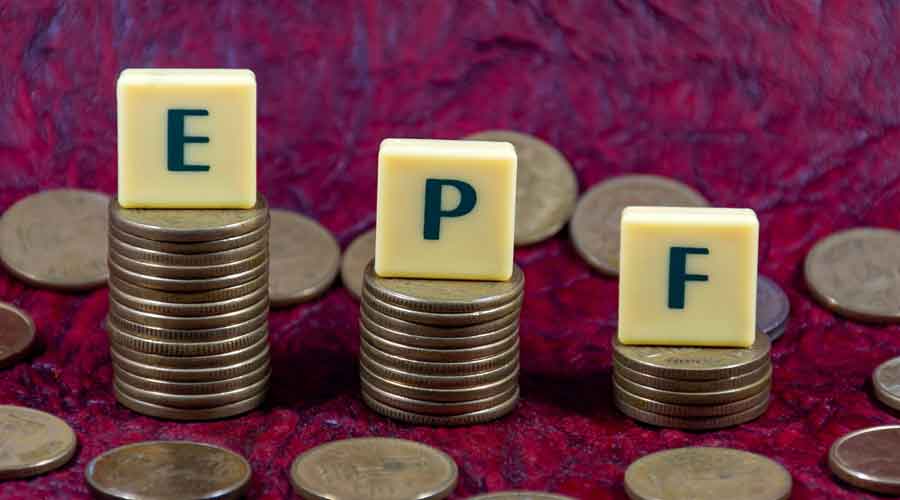On May 31, 2021, the Union ministry of labour and employment announced that provident fund account subscribers of the Employees’ Provident Fund Organisation would be eligible to avail themselves of a second non-refundable advance from their accumulated balance.
While the objective is to reduce the financial hardship because of Covid-19 pandemic, given the purpose of the provident fund savings, questions arise whether it is a good idea to dip into the future corpus to meet present needs.
EPF is a government managed retirement savings scheme for employees where both the employer and the employee can contribute to accumulate a corpus which is aimed at providing social security and financial coverage at retirement. Given the nature of the savings, there are only a handful of specified purposes such as medical emergencies, higher education and purchase of house. This was before Covid-19 pandemic hit last year.
The country went into a lockdown to prevent the spread of the virus and that meant other than essential sectors, offices and factories were shut and salaries became irregular as corporate houses scrambled to keep expenses in check.
First advance
To support its subscribers, EPFO allowed a special withdrawal to meet the financial needs during this difficult time. The government through notification GSR 225 (E) dated 27.03.2020 allowed withdrawal of non-refundable advance by EPF members in the event of the Covid pandemic situation by way of introducing sub-para 3 under paragraph 68L of the EPF Scheme, 1952.
With this amendment, an EPF member could avail a non-refundable advance of three months of the basic wages and dearness allowances or up to 75 per cent of the amount standing to the member’s credit, whichever is lower. Such an advance, being non-refundable, is not liable to be paid back by the EPF member. The settlement time for such advances was also reduced from 20 days to three days.
As of May 31, 2021, EPFO had settled 76.31 lakh Covid-19 advance claims disbursing a total of Rs 18,698.15 crore, according to government data. The response was only moderate given that EPFO has over 6 crore contributing members.
Second wave
The situation is a bit different in the second wave of the pandemic in 2021. There is no central government mandated lockdown. Moreover, in addition to Covid, there is also the threat of black fungus which has been declared as an epidemic. Keeping in view the trying times, EPFO allowed its members another round of advances. Members who have already availed of the first advance can also opt for a second advance. The provision and process for the withdrawal of the second Covid-19 advance is the same as in the case of the first advance.
One of the primary reasons why personal finance experts discourage any withdrawal from the PF corpus is the relatively higher rate of interest offered by the EPFO of 8.5 per cent in 2020-21 compared with the bank interest rates of 4-6 per cent. After factoring in the power of compounding of interest and income tax benefits on contributions under section 80C of the Income Tax Act, it makes sense to keep the corpus untouched till the time of retirement.
“Provident fund deposits are considered to be among the best investment instruments for building a retirement corpus as they provide a higher interest rate accompanied with great tax benefits. In normal circumstances, it is never advisable to withdraw an amount from the PF as it has an adverse impact on the retirement funds. Moreover, withdrawing a high return generating investment such as PF which is backed by sovereign guarantee and tax benefits should definitely be avoided and be treated as a last resort,” said Suresh Surana, founder, RSM India.
“However, in exceptional circumstances such as the current situation, which have caused disruptions in income and sudden medical emergencies, PF withdrawal may be considered as an option as opposed to borrowing funds,” he added.
Being non-refundable in nature, there is no need for repayment and the withdrawal does not warrant any tax. But as the overall corpus contracts, the interest earned also goes down. While it is better than taking an interest bearing personal loan in uncertain times with the risk of damaging credit score, PF withdrawal should be resorted to only if there are no emergency funds to meet the current requirements and only after exhausting all other liquid investments such as fixed deposits or other short term investments.
Some pointers
⚫If a subscriber has worked in multiple companies and is currently in service with an active PF account, PF accumulations in the previous accounts should be transferred to the active account for an easier claim. Name, date of birth and gender in all the accounts have to be the same
⚫An individual may not be in active service but may have still not availed the final PF withdrawal benefit. As long as the amount is with the EPFO a claim for Covid advance can be made
⚫The claim for this advance can be filed online if UAN is validated with Aadhaar and KYC of bank account and mobile number is seeded in UAN. In case of mismatch in KYC details and details in an EPF account, a subscriber has to file a request for demographic detail correction through the employer
⚫An EPF subscriber can apply for lesser amounts than the limits mentioned earlier
⚫An application for Covid-19 advance is permitted even if other advance claims are pending











